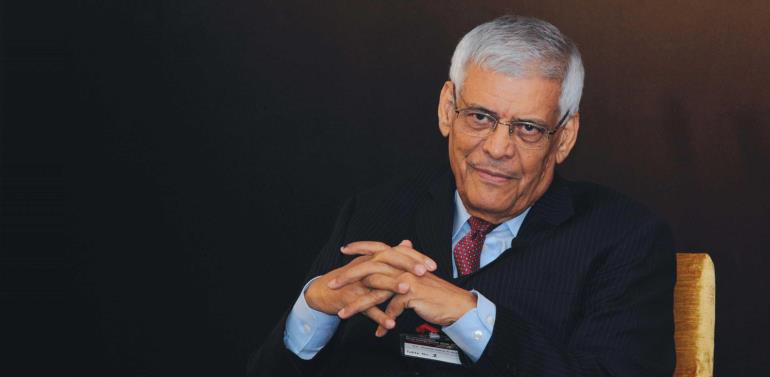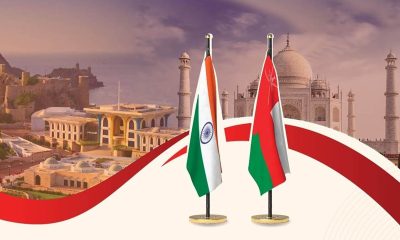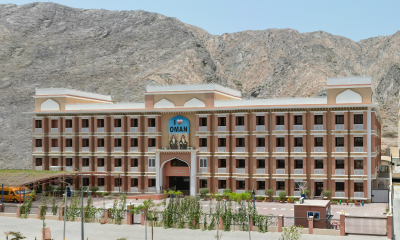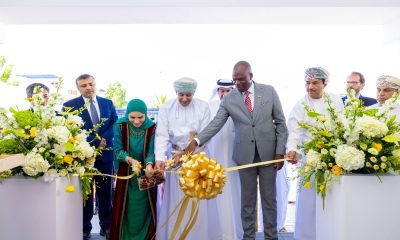Experts
A new normal or just another cycle?

HE Abdalla S. El-Badri, OPEC Secretary General, tried to answer this question at the recent 6th Asian Ministerial Energy Roundtable, held recently in Doha, Qatar. OGR presents to you some of his viewpoints, in his own words, from the address at the Roundtable.
Since July 2014, the (oil) market has witnessed a great deal of volatility. Prices have fallen by 60 per cent, many investments have been deferred or even cancelled, manpower has been laid off, supply has been greater than demand, stocks have risen above their five-year average, and the market has been searching for balance. It leads me to the question: Have recent events created ‘a new normal’ for the oil market, or is it just ‘another cycle’ in the oil industry’s history? The industry has gone through many cycles. We have had periods when prices were low, and periods when prices were high. We have seen times when supply outstripped demand, and times when supply has struggled to keep up. There have been long periods of stability, as well as some periods of instability. I am sure some of us can recall the supply and demand challenges of the early 1980s and the price drop in 1985-1986. The OPEC Reference Basket fell from around $25/b in November 1985 to just $8/b in July 1986. In 1997 and 1998, there was the Asian financial crisis, and another price drop. The OPEC Reference Basket fell from around $20/b in October 1997 to $9/b in December 1998.
In the early years of the last decade we saw strong demand growth, particularly in Asia, which led to rising prices. And at the end of 2008, there was the global financial crisis, when prices dropped from around $140/b to the mid-$30 range. The current cycle was triggered by oversupply. But what is different on this occasion is that most of the supply increases in recent years have come from high-cost production. The market is now taking on board this new reality and gradually resetting itself, as we can see with falling non-OPEC supply growth and stronger demand. As with previous cycles, the industry will come through this one. In fact, cycles have helped make it increasingly resilient and more efficient. Our industry is built on strong foundations.
Nevertheless, we should recognize that each cycle does bring with it changes and challenges. For example, from 2014 to 2015, the industry has seen a fall in exploration and production investment of around $130 billion. This equates to a 20 per cent drop. And questions are being asked as to what might be the medium- and long-term impacts of the recent manpower cuts, particularly given that the industry was experiencing critical shortages even before this cycle.
Of course, there are also many other on going challenges: the uncertain prospects for the global economy; environmental issues and concerns; excessive speculation and the role of financial markets; the impact of geopolitics; and advances in technology and their impacts on exploration and production, to name just a few. Moreover, many new factors may be just around the corner; there are always unknowns. So while cycles come and go, we need to appreciate that the industry never stands still. This brings me to the second question: ‘what does it mean for Asia?’
Asia has a number of significant producers, but overall it is a major importer of crude and products. Thus, the price fall will no doubt have been beneficial to many of its economies. We should also recall that many Asian economies flourished during periods of higher prices. However, low prices for a long time are not good for anyone. The same goes for high prices. The industry will need to supply more oil in the future, much of it going to the Asian region. And this will need more investment. We see oil demand increasing by around 17 million barrels a day between now and 2040, reaching close to 110 million barrels a day by then. And 70 per cent of this growth alone is expected to come from the developing Asia region.
It will mean that over the next 25 years or so Asia will see energy and oil imports increase from almost all regions – but mainly from the Middle East, where many OPEC Members are located. Let me stress here that all our member countries remain committed to making sure customers receive secure and regular oil supplies to meet their demand needs.
In terms of oil-related investment requirements, these are estimated to be around $10 trillion between now and 2040. There are huge investments that need to be made. Thus, it is vital to keep in mind the link between the marginal cost, the price and investments. It leads to me the question: are current prices at a level that will see all the necessary future investments take place? It is clear they are not. At current price levels, not all of the necessary future investment is viable.
Given that Asia is central to the global oil market’s future, as the engine of economic growth and oil demand in the decades ahead, it is vital the region understands the oil market’s short- and long-term market dynamics. It is clear that the importance of dialogue between the world’s energy stakeholders – especially in terms of bringing together producers and consumers together – has never been greater.
The expectation is that the market will return to more balance in 2016. We see global oil demand maintaining its recent healthy growth. We see less non-OPEC supply. And we see an increase in the demand for OPEC crude. A more balanced market is clearly beneficial to us all – both producers and consumers.
-

 Banking & Finance2 weeks ago
Banking & Finance2 weeks agoOman Oil Marketing Company Concludes Its Annual Health, Safety, Environment, and Quality Week, Reaffirming People and Safety as a Top Priority
-

 Economy2 months ago
Economy2 months agoMaal Card: What Oman’s New National Payment Card Means for Everyday Users
-

 News2 months ago
News2 months agoSheikh Suhail Bahwan, Chairman of Suhail Bahwan Group, Passes Away
-

 News1 month ago
News1 month agoOIG Appoints New CEO to Lead Its Next Chapter of Excellence
-

 Economy2 months ago
Economy2 months agoOman Unveils Official Omani Rial Symbol in Landmark Move to Boost Global Currency Presence
-

 News1 month ago
News1 month agoReport: How India & The Middle East Are Exploiting Immense Economic Synergies
-

 Uncategorized1 month ago
Uncategorized1 month agoOman’s ISWK Cambridge Learners Achieve ‘Top in the World’ and National Honours in June 2025 Cambridge Series
-

 Trade1 month ago
Trade1 month agoConsulate Office of the Republic of South Africa opens in Muscat, enhancing bilateral relations




























You must be logged in to post a comment Login